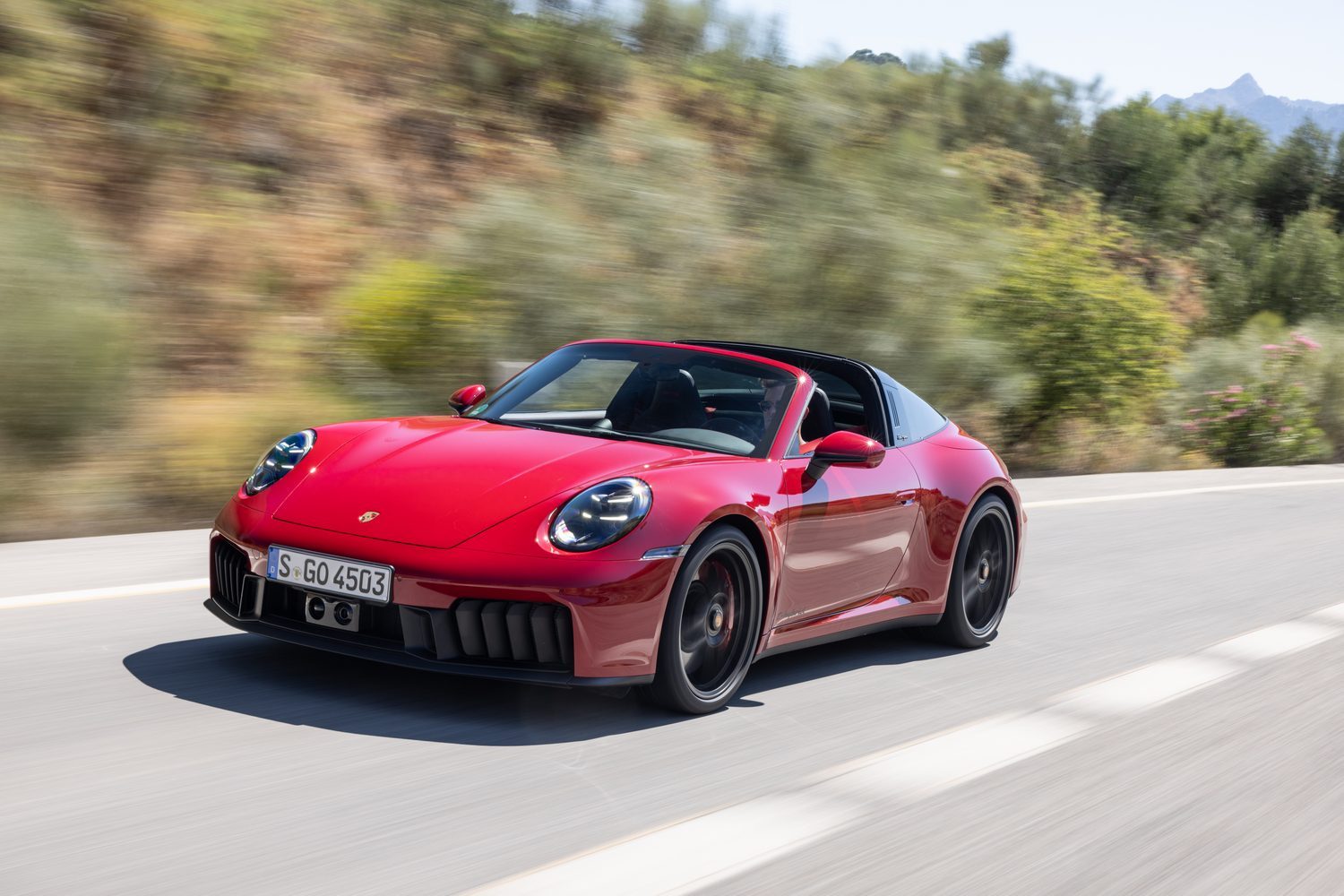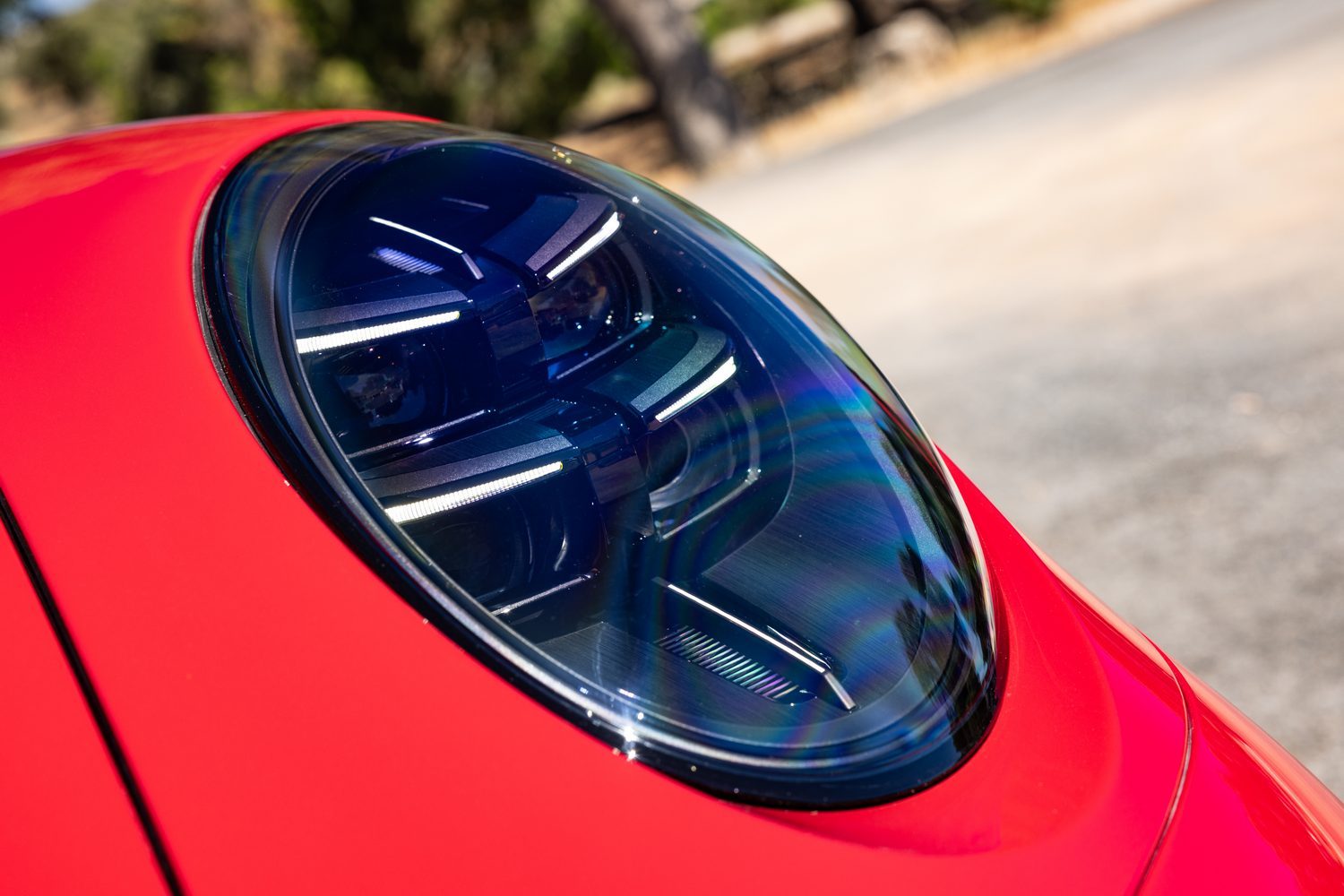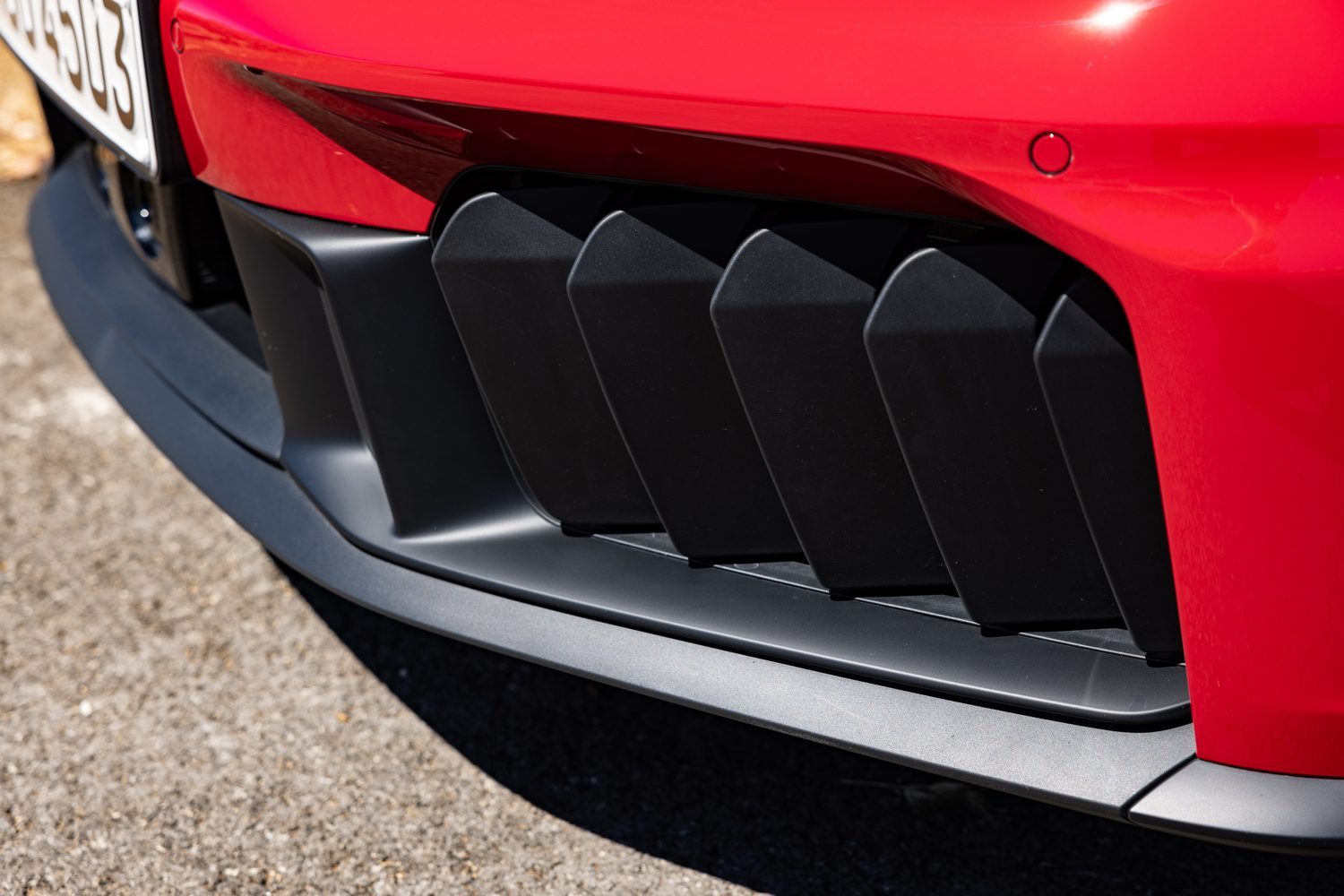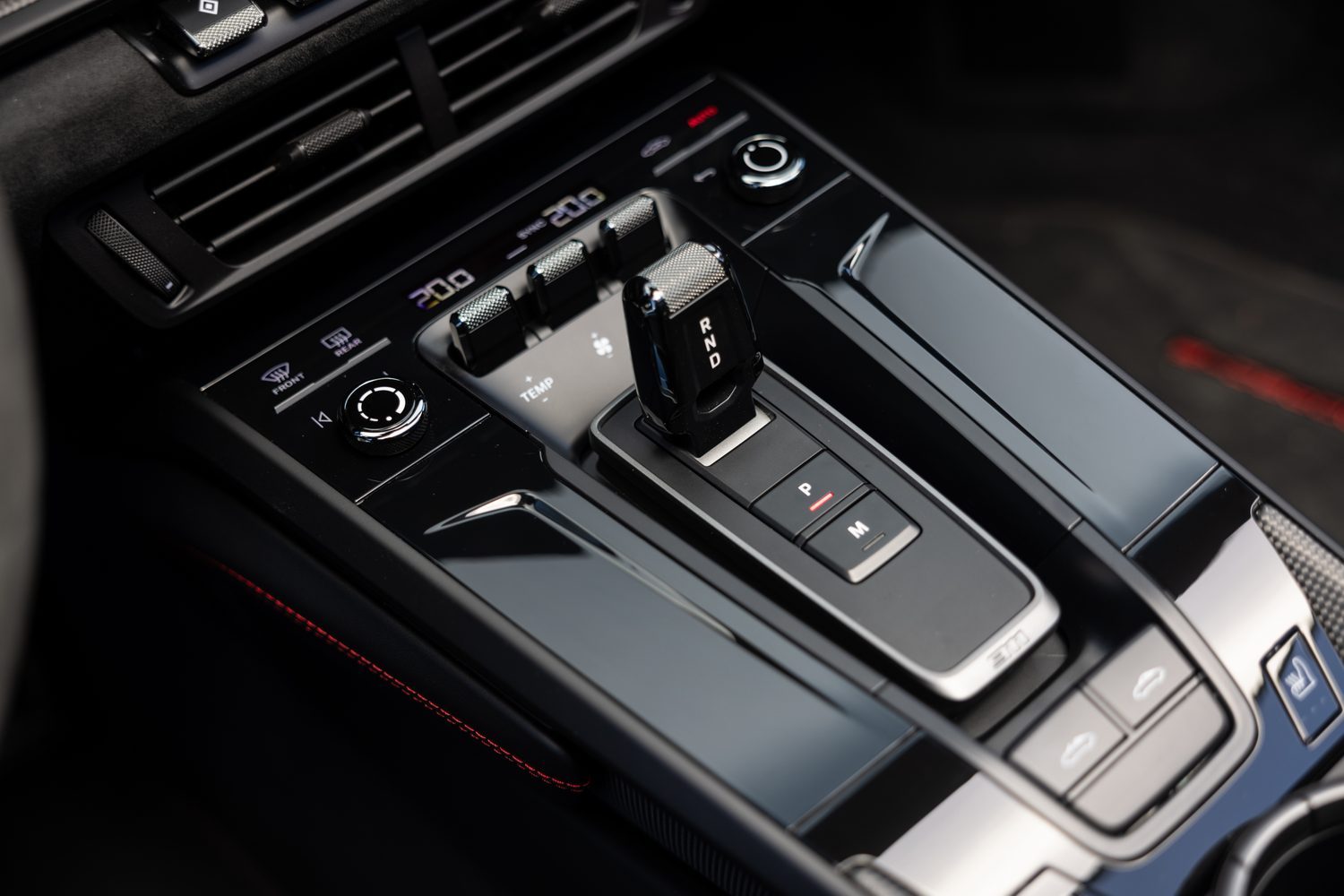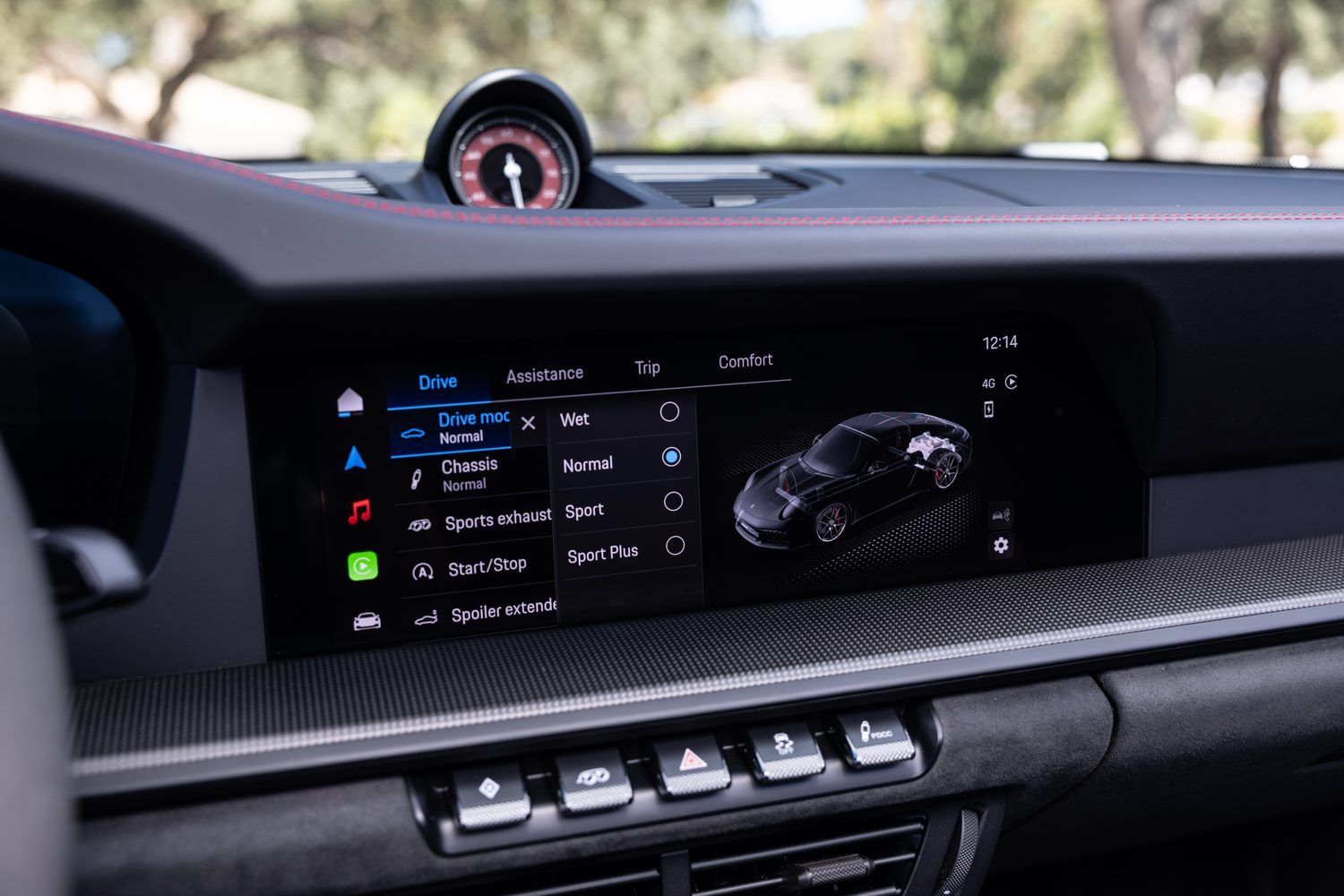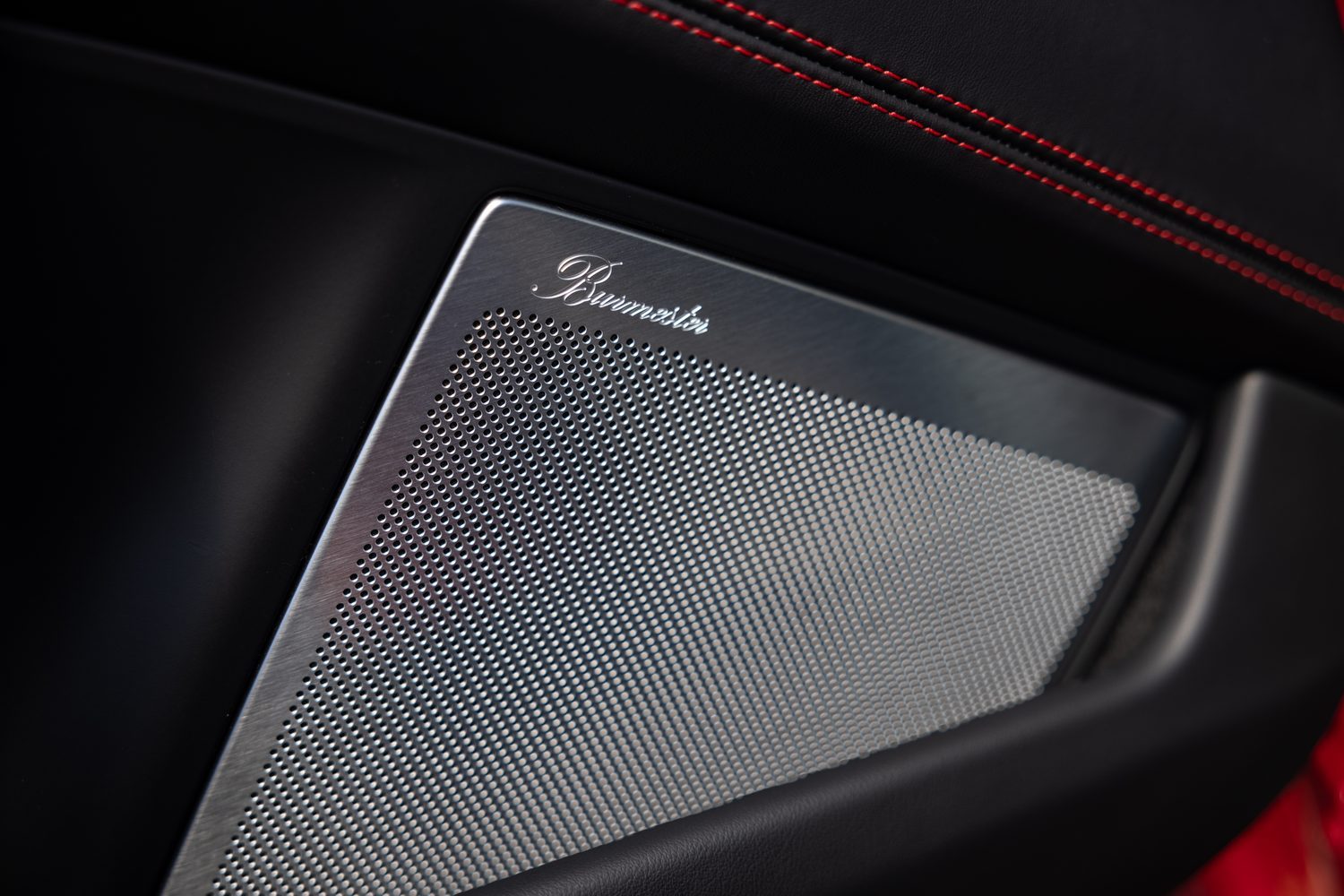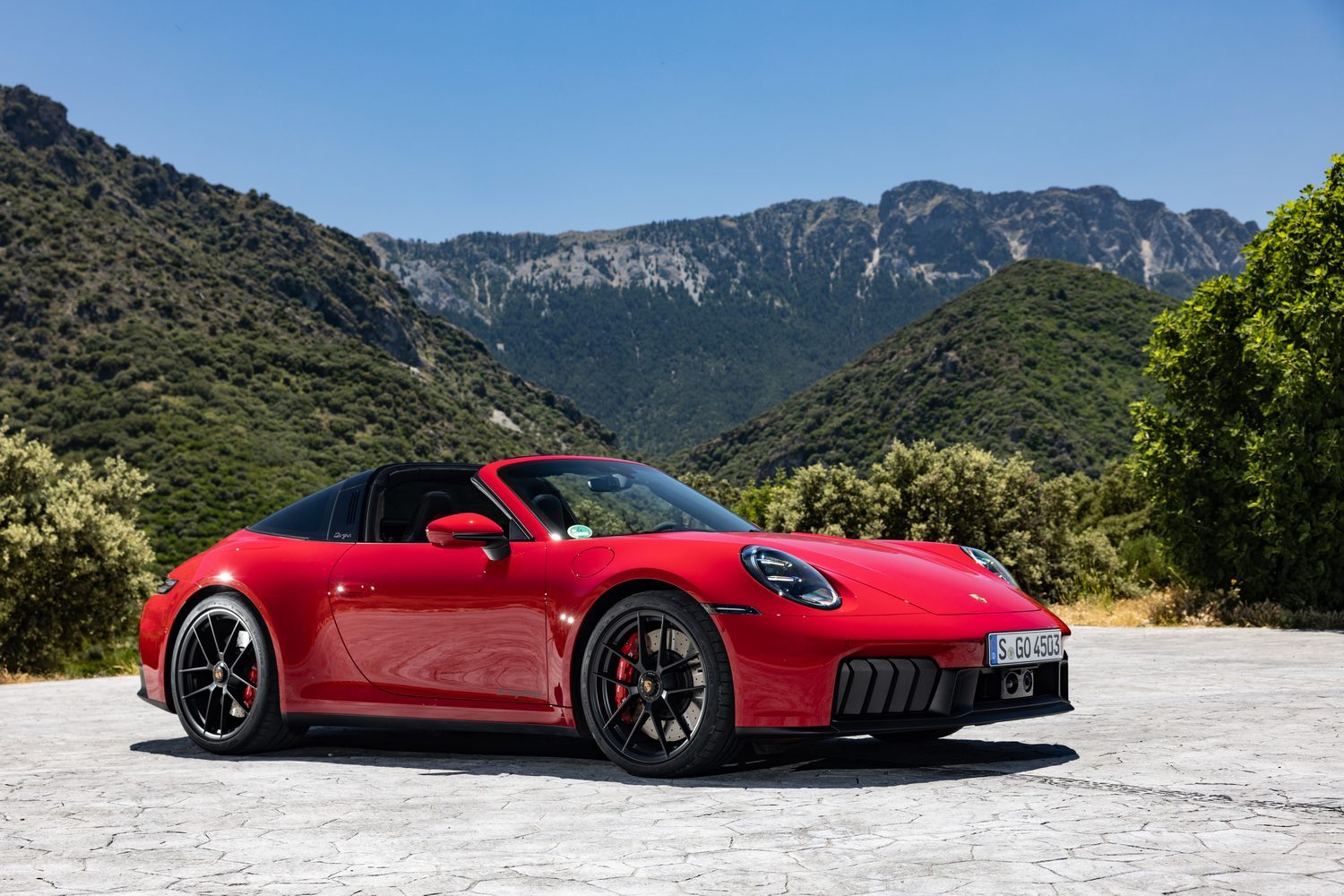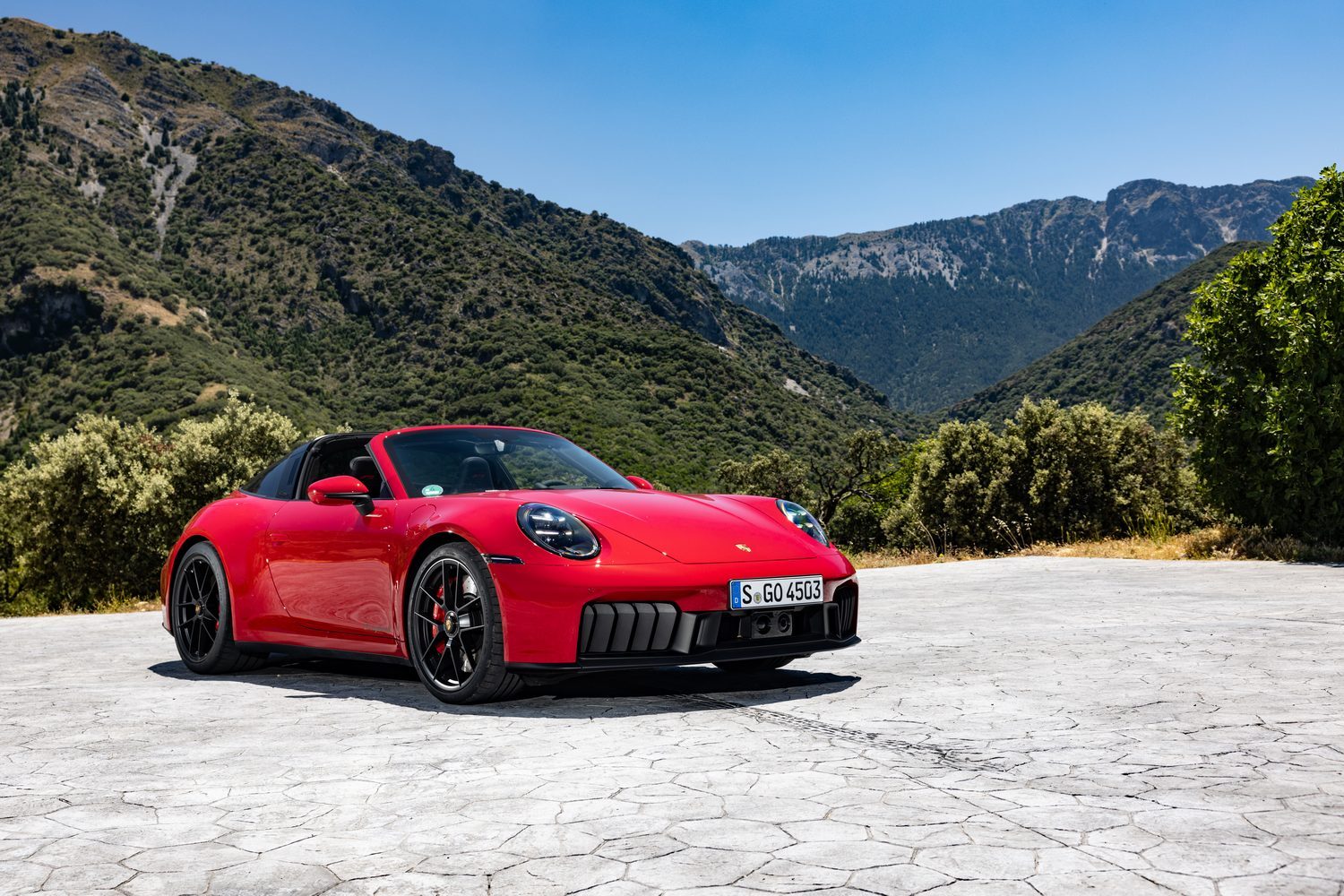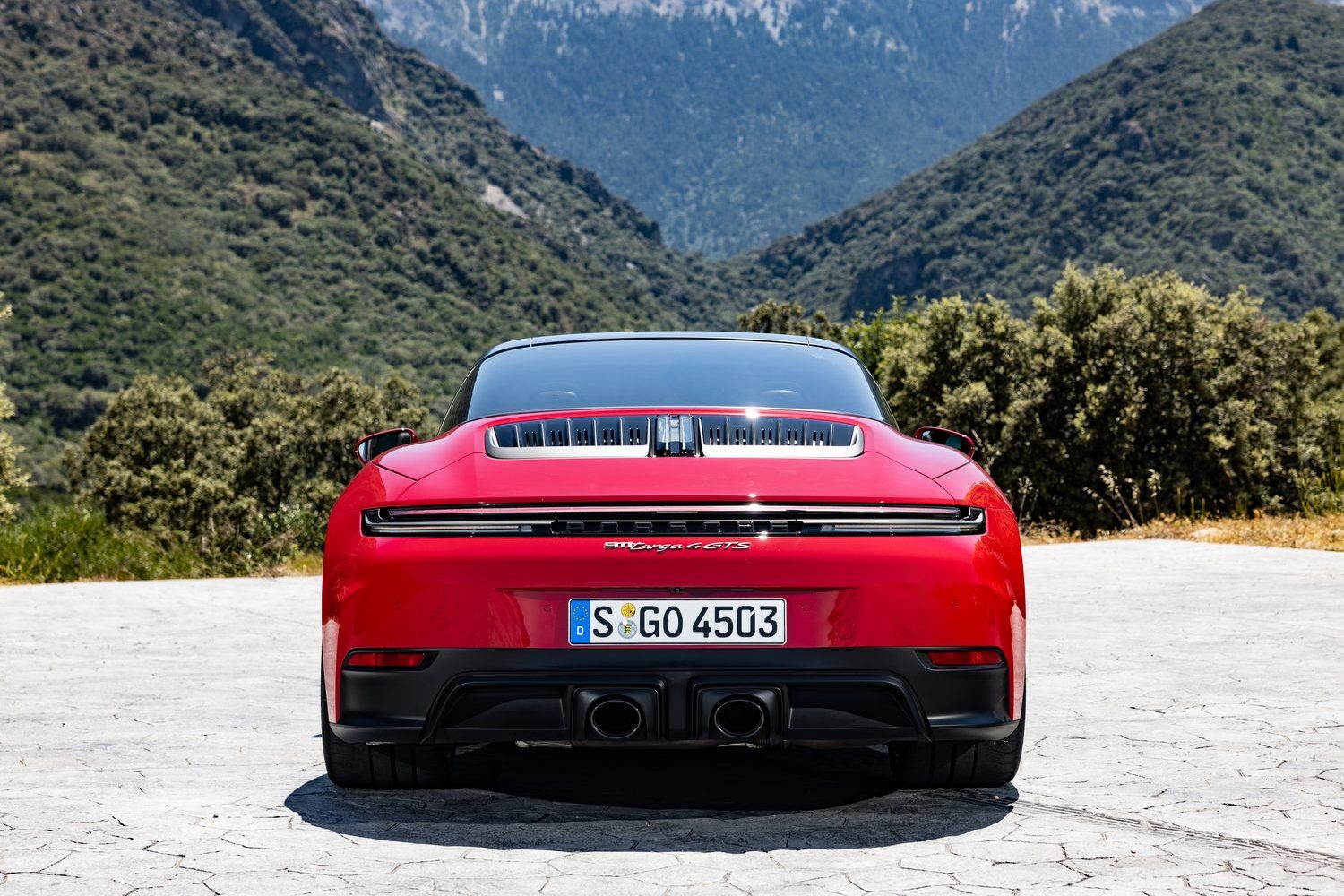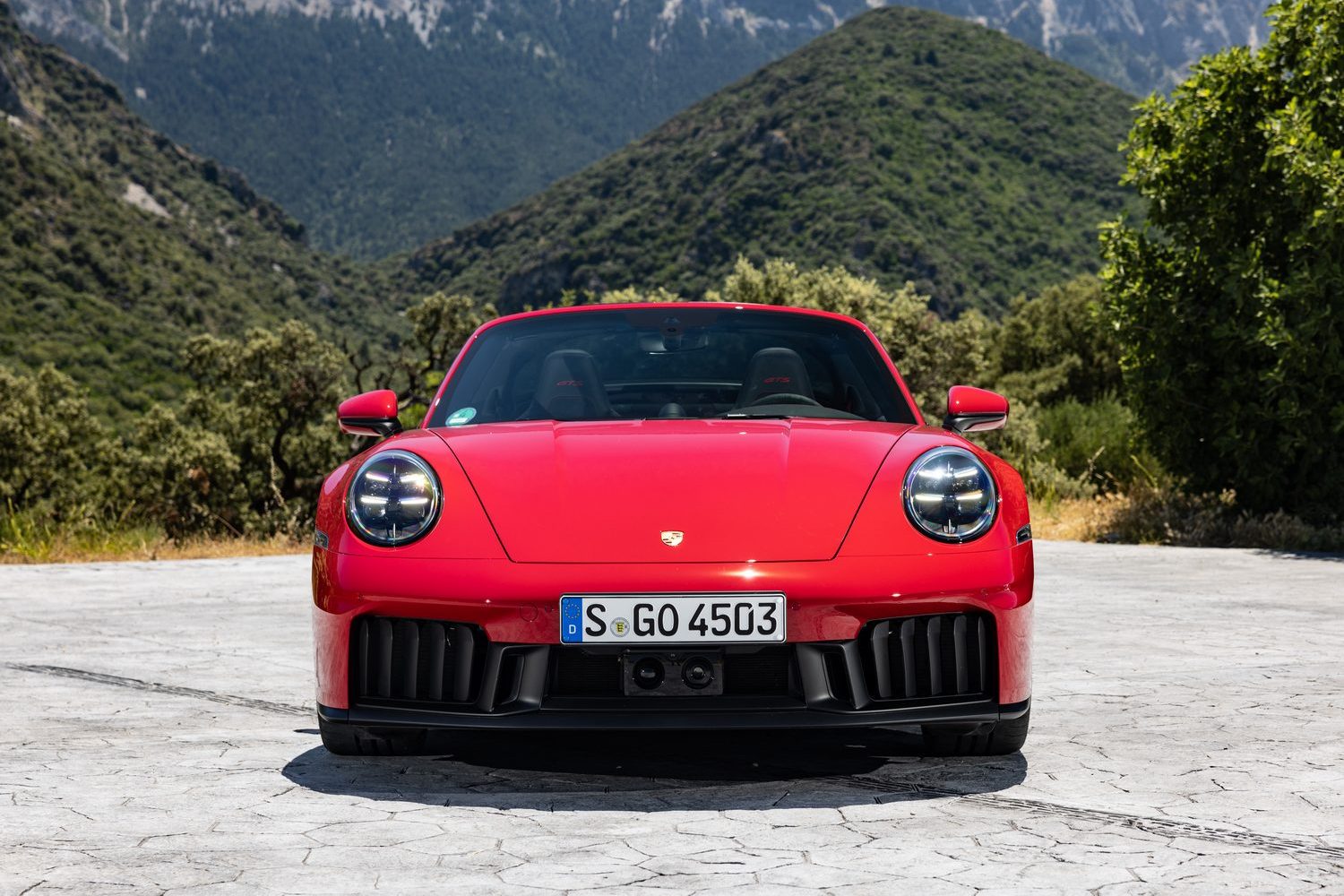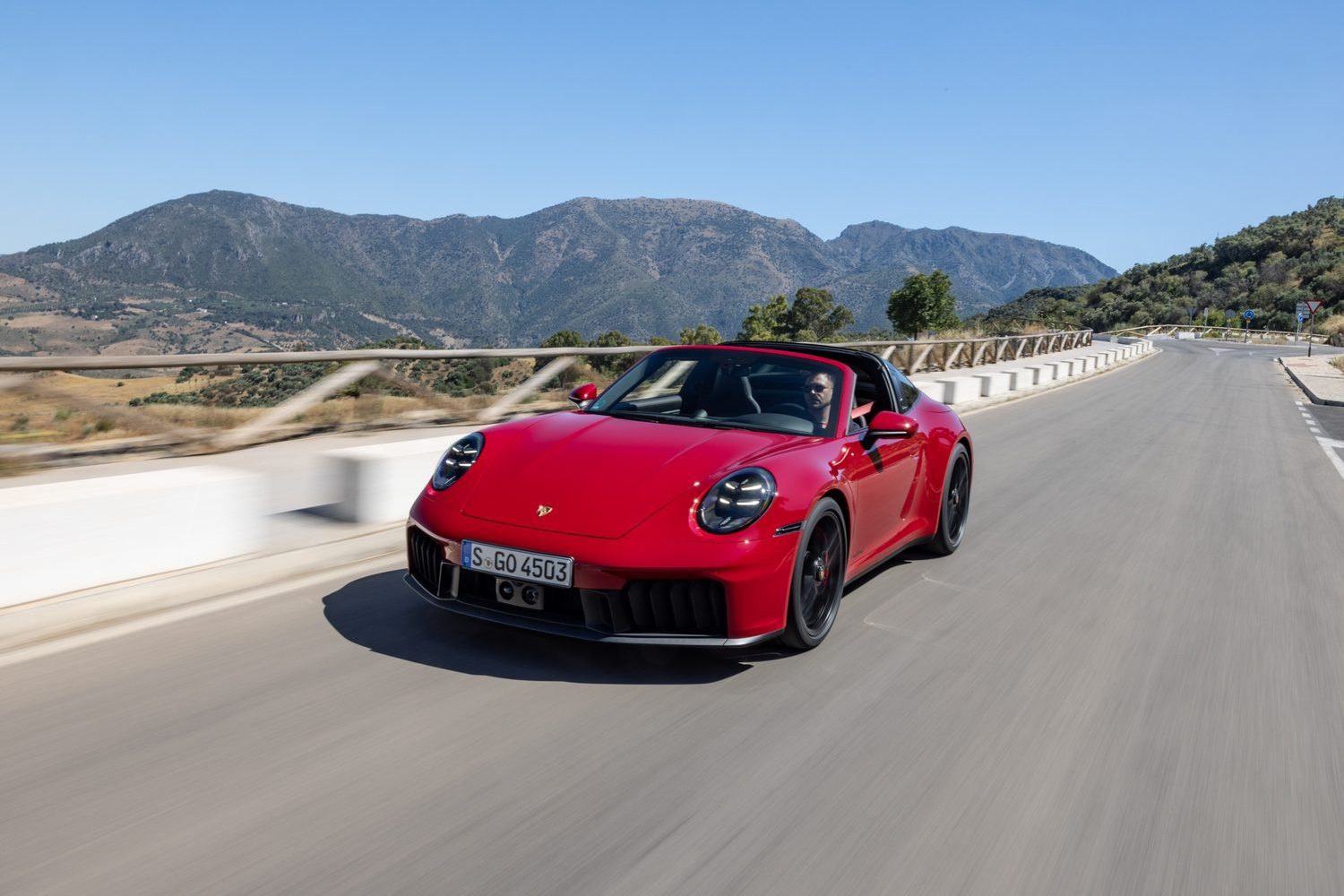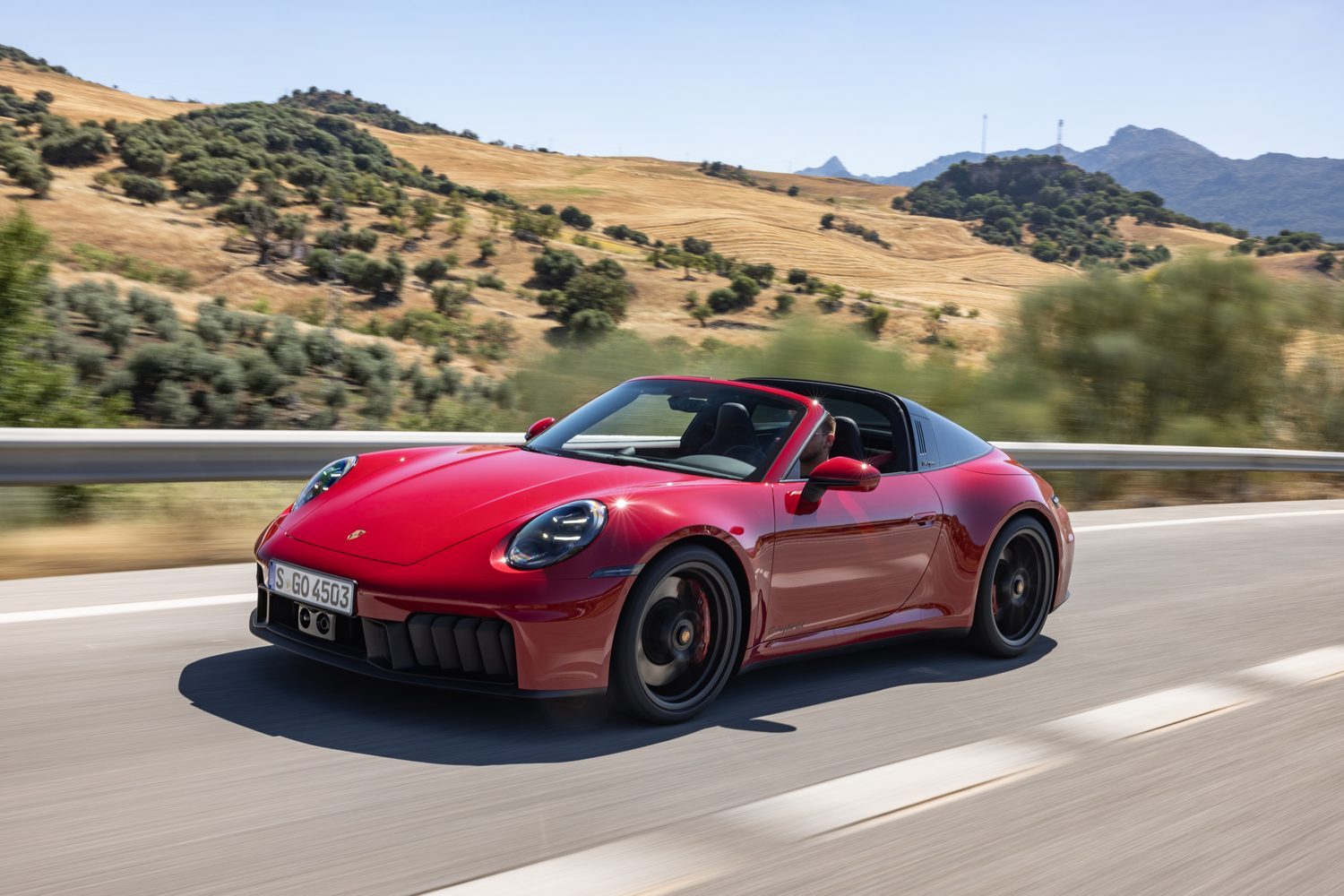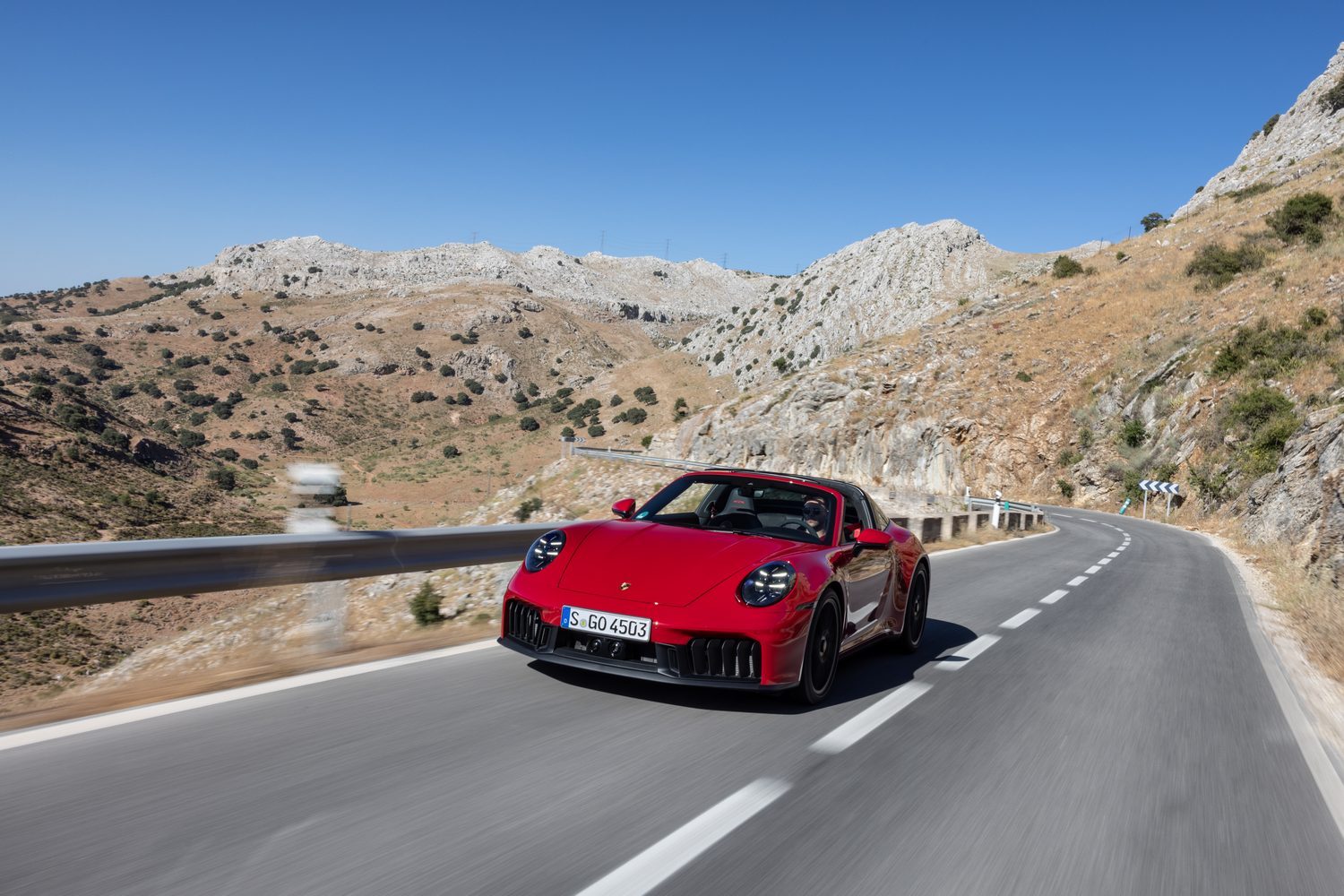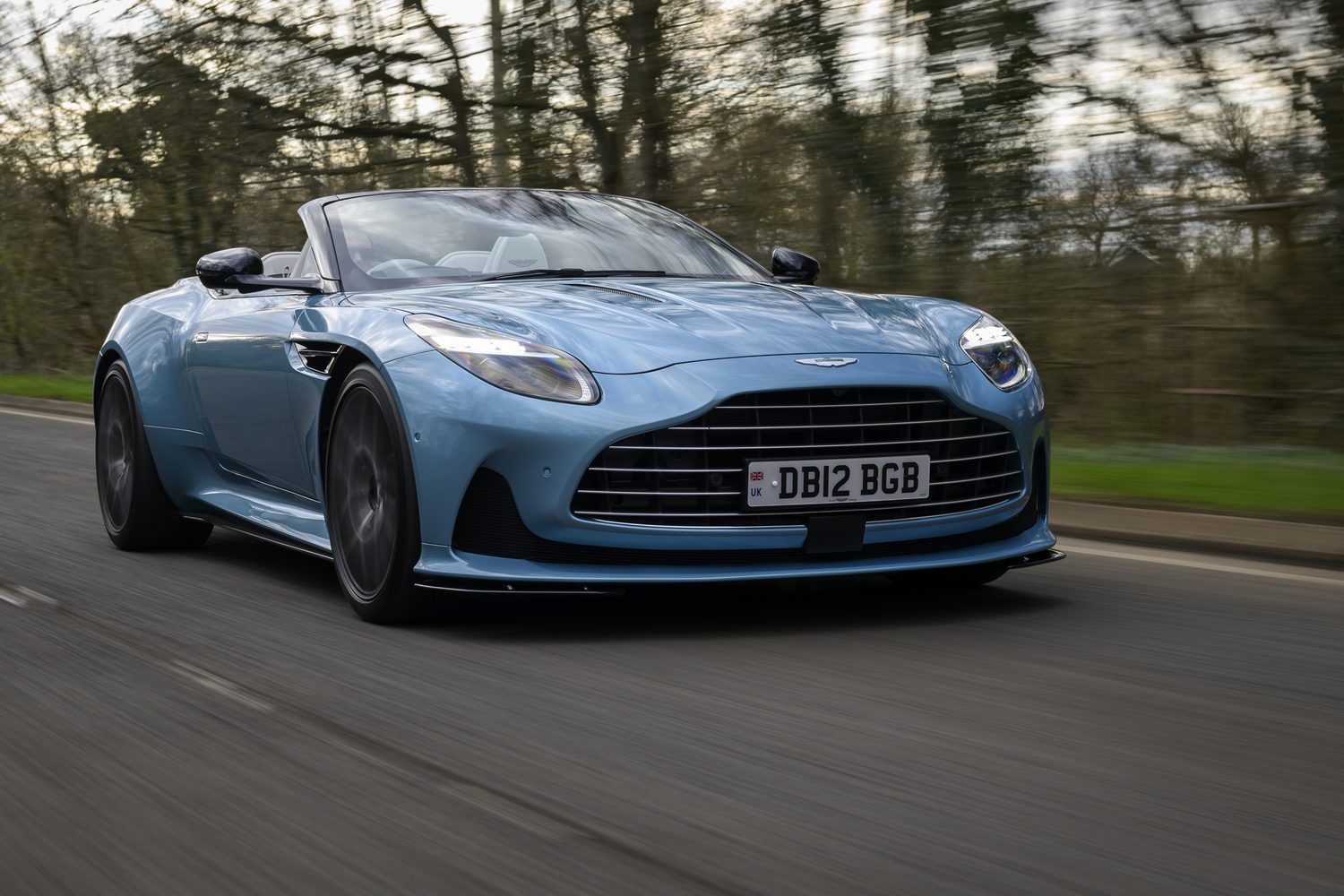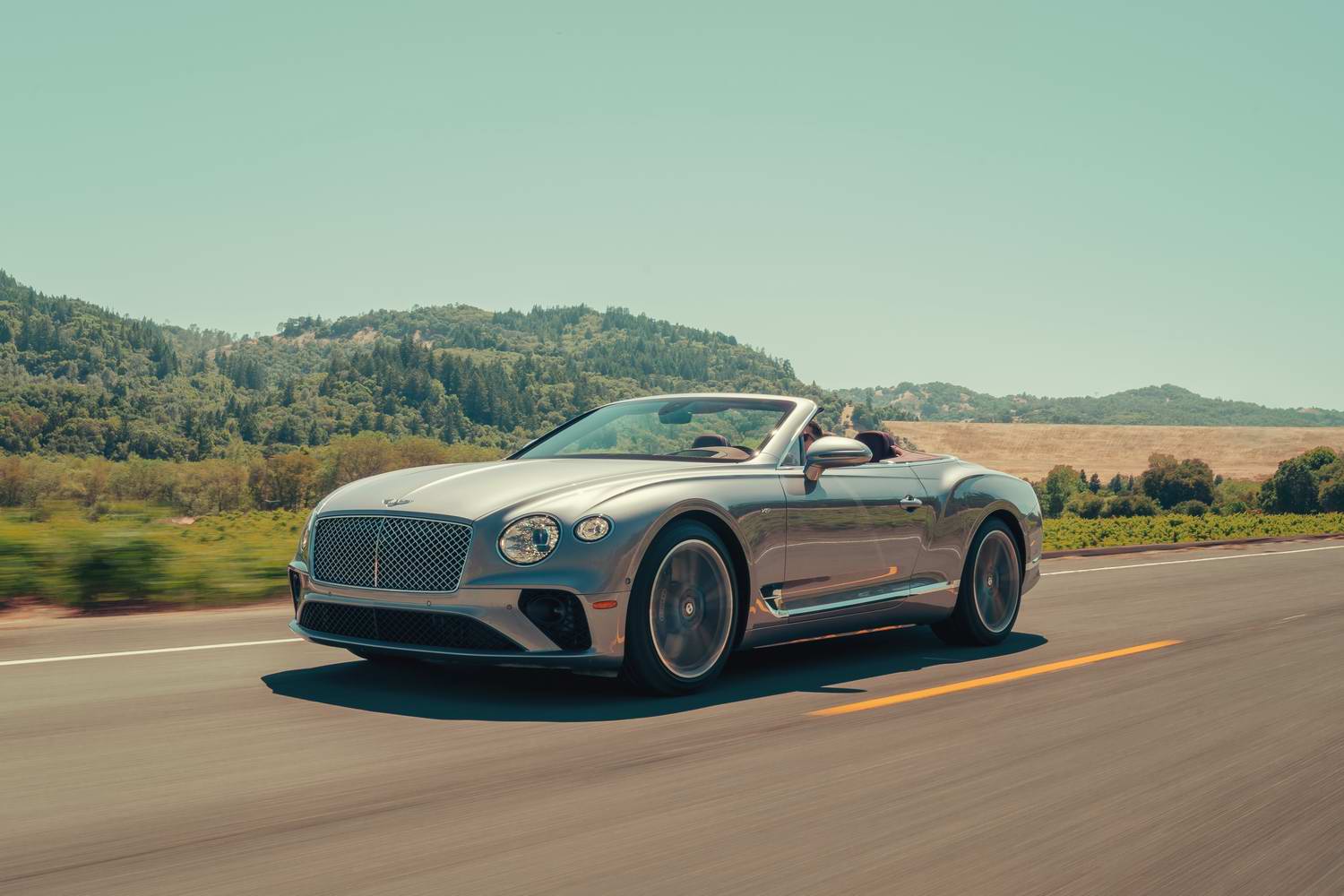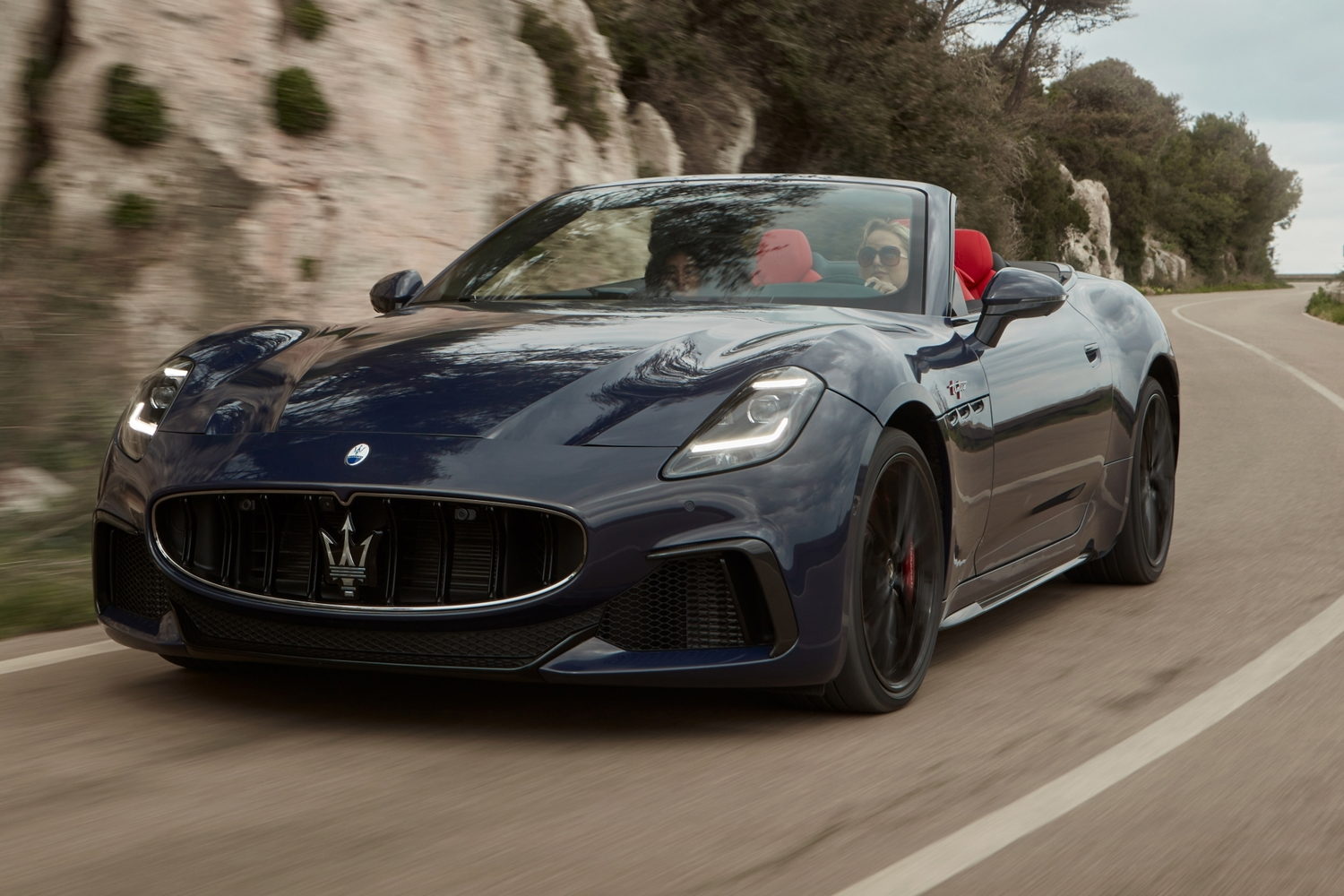Porsche’s Targa body is a bit of an oddity in the car market, but it has cult hero status among fans of the 911, and Porsche continues to push them out of its German factory gates. So, with the arrival of a new 911 - the 992.2 - there’s a new Targa, except this one is newer than you might expect.
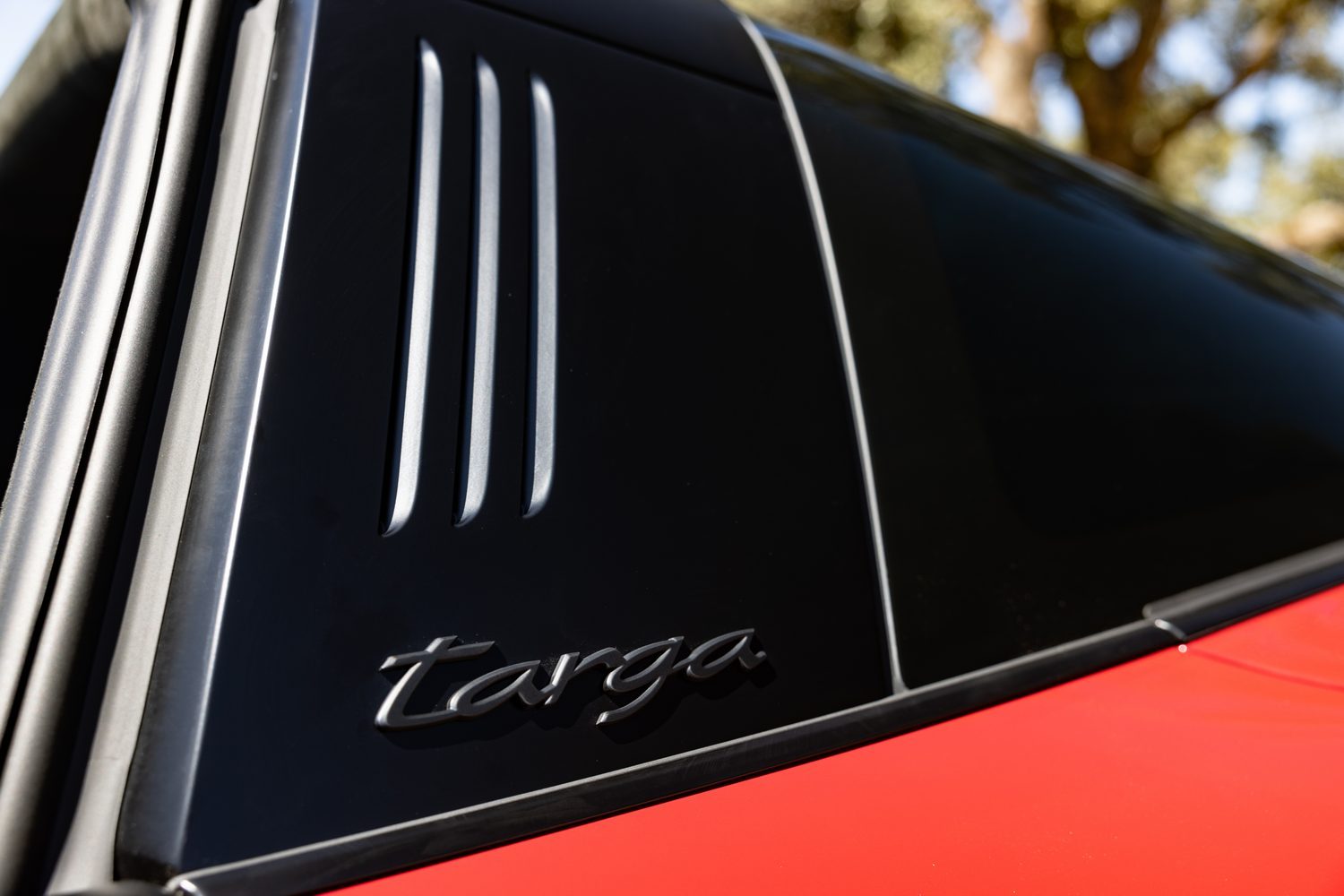
Because Porsche is initially offering it solely in GTS trim, it also gets the 911’s new ‘T-Hybrid’ powertrain, which combines a classic flat-six engine with a clever electrical system for extra performance. Perhaps it isn’t the efficient hybrid for which some were hoping, but as a performance car it has already shown its talents in our first drive of the Carrera 4 GTS Coupe. Will our first taste of the open-top Targa - at the same event in Spain - show it to be just as brilliant?
A look inside the Porsche 911 Targa 4 GTS
Unsurprisingly, the Targa’s cabin design follows that of the Coupe, with the strong, traditional shape punctuated by a new digital instrument cluster and a lightly revamped central touchscreen. The two screens have modernised the cabin, although we do miss the old analogue rev counter a little.
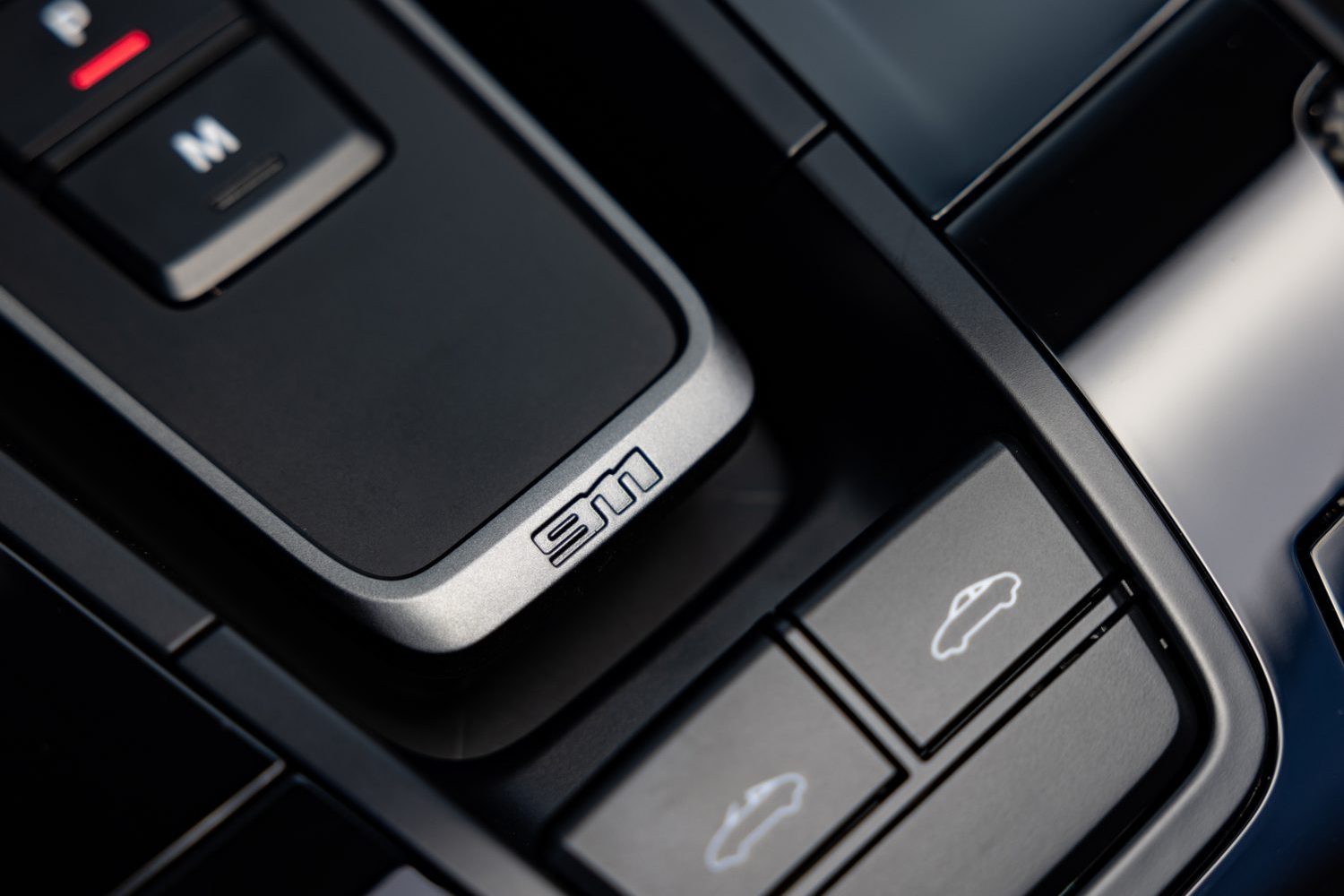
But it’s not like the tech detracts from the quality in the 911. The cabin is still fantastically well built, with some first-rate materials and switchgear that moves smoothly and efficiently while still feeling robust.
And because the Targa is a GTS, it gets all the same cabin upgrades as the Coupe and Cabriolet models. That means the interior is trimmed with Porsche’s ‘Race-Tex’ microfibre as standard, although you can specify leather if you’d rather, and you get the Sport Chrono Package as standard, so there’s a drive mode selector on the wheel with a red Sport Response button. It’s a surprisingly low-rent look for something that’s otherwise very premium, but it’s hardly the design crime of the century.
Unlike the GTS Coupe, though, the Targa also gets rear seats as standard, although what you’d do with them is anyone’s guess. Space in the back is tight at best, and getting adults in there really won’t be fun. You might get kids in there if you try, but really, that space is best used as a supplement to the 135-litre luggage tub in the nose.
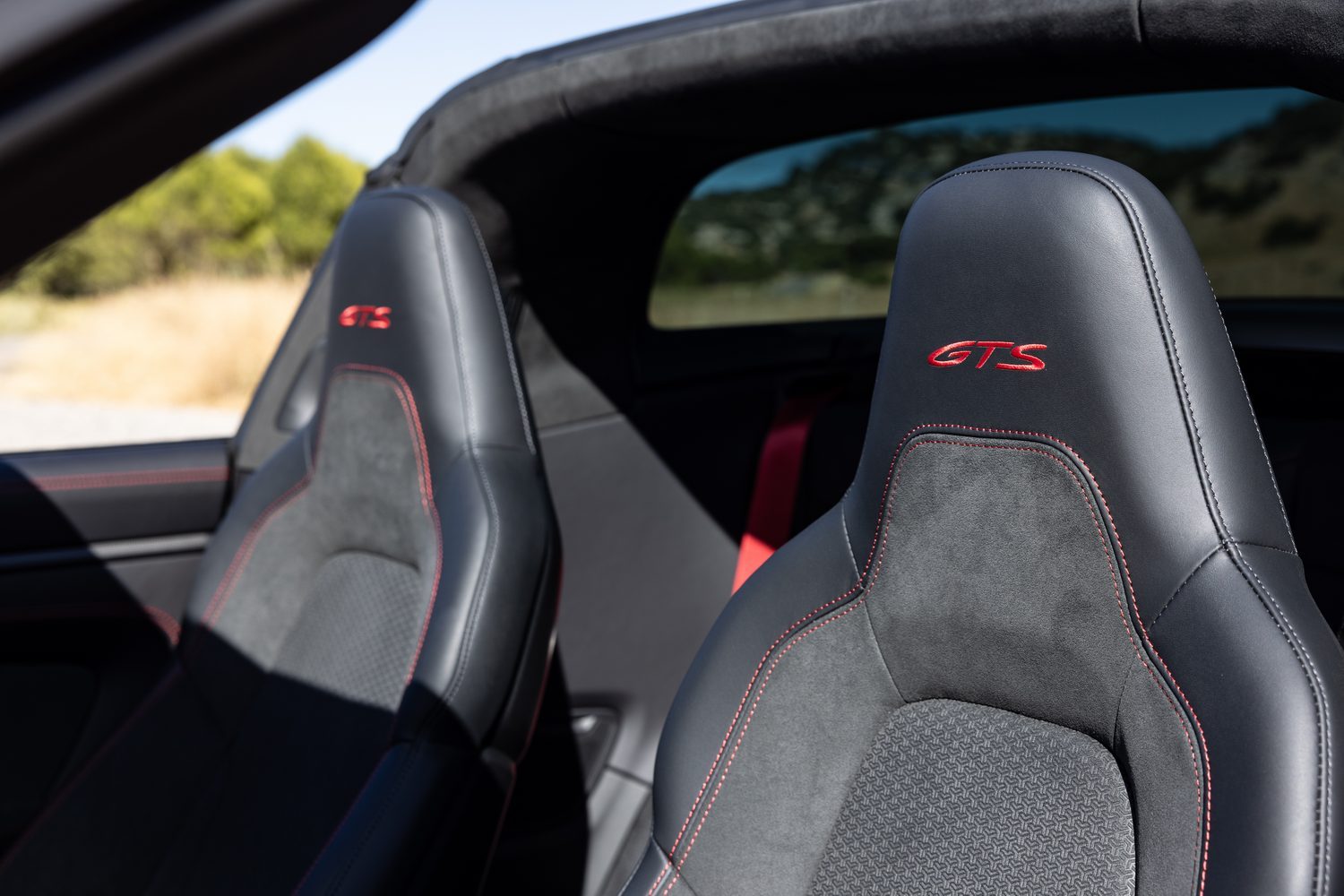
Although that volume sounds tiny, it’s more useful than you might initially think, and it should be enough for a weekend away for two. Use the back seats, and you can probably stretch that to a week with a bit of careful packing.
The Porsche 911’s on-board technology
Hybrid system aside, the digital instrument cluster is arguably the tech highlight of the new 911, replacing the old car’s half-and-half unit that combined an analogue rev counter with digital displays at the side. Porsche says the new system is not only necessary for the extra configuration options it provides, but because the old system was quite difficult to see through the steering wheel.
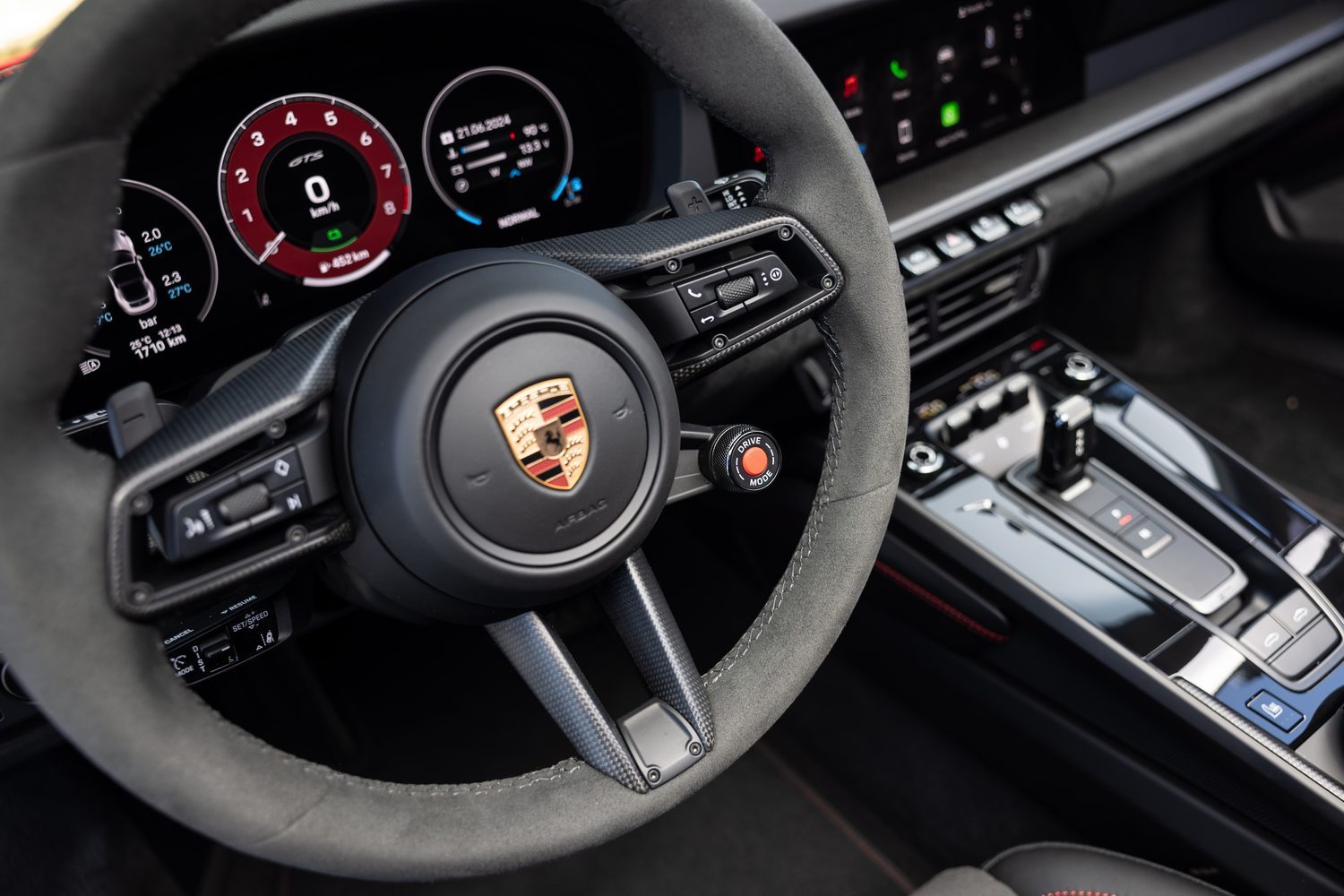
Whatever the reasoning, the execution of the new display is excellent, and the crisp graphics combine with useful configuration settings to provide a really useful system, even if customers will only pick the display they like best and stick with it.
Elsewhere in the cabin, the new touchscreen’s updates are predominantly connectivity-orientated, but the system didn’t need that much work. The menus are logical and easy to navigate, and it all looks as upmarket as the rest of the cabin.
How fast is the Porsche 911 Targa 4 GTS?
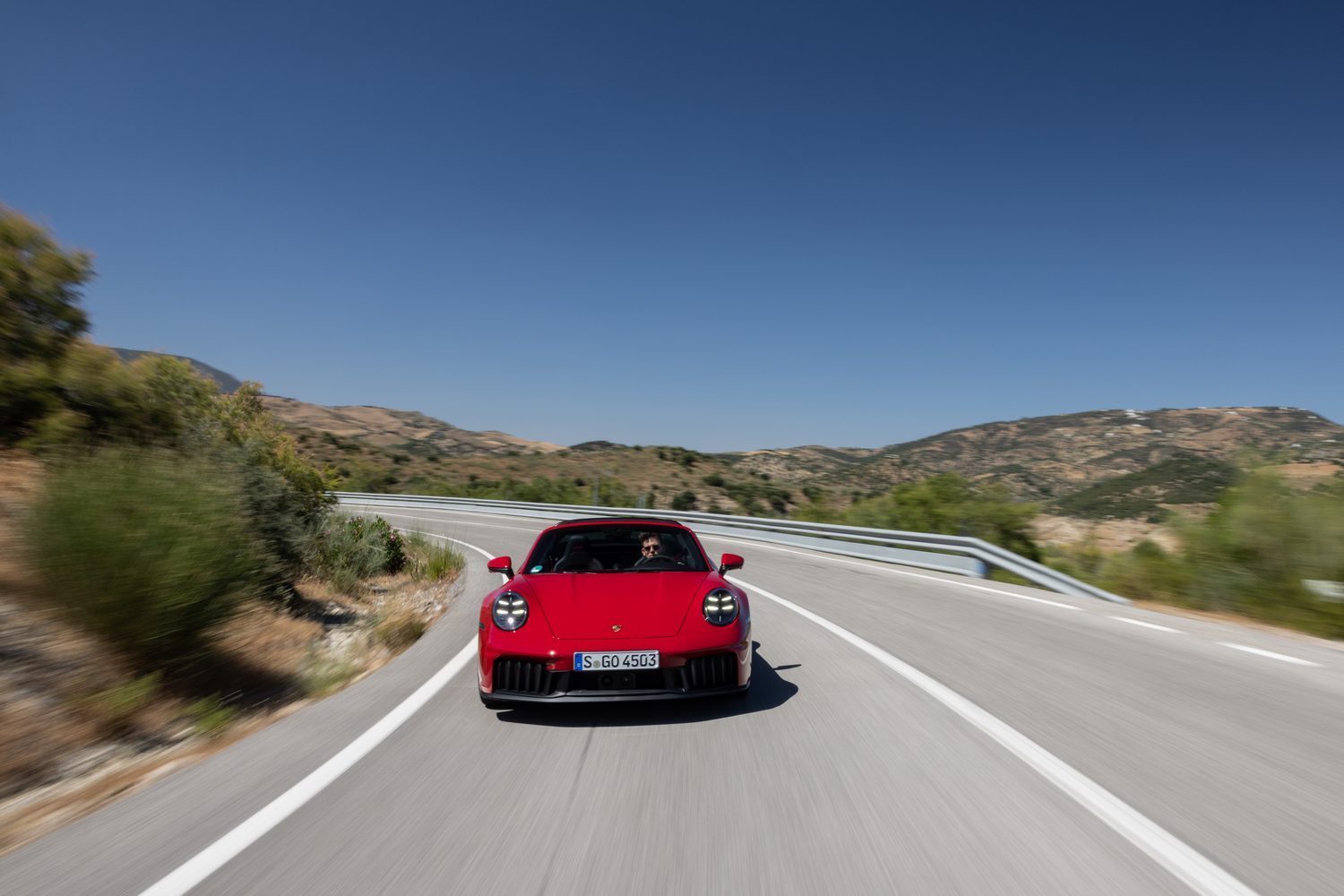
Just like the Carrera 4 GTS Coupe and Cabriolet models, the Targa 4 GTS gets the new T-Hybrid powertrain that’s exclusive to GTS versions of the latest-generation 911. Combining a new 3.6-litre turbocharged flat-six engine (using the electrically assisted eTurbo) with an electric motor and a 1.9kWh battery pack, as well as Porsche’s rear-biased all-wheel-drive system, it’s designed to increase performance without increasing emissions or fuel consumption.
It has certainly increased performance, because the 992.2 Targa 4 GTS gets from 0-100km/h in 3.1 seconds and blasts on to a top speed of 312km/h. It isn’t quite as fast as the lighter, more aerodynamic Coupe, but it’s very close indeed, taking just a tenth of a second longer to hit 100km/h and matching the hard-top car at full chat.
Obviously, that’s partly down to the hybrid system, but not necessarily in the way you might expect. The new GTS is only 61hp up on its predecessor, and it’s about 50kg heavier, so the performance comes more from its relentlessness and responsiveness than from its outright power. The electric motor not only helps when the engine is off the boil, but also does the job of the alternator and starting motor. Combined with the might of the eTurbo, the GTS’s acceleration is nothing short of biblical. And with all-wheel drive providing seemingly endless traction, you can access the performance almost whenever you want.
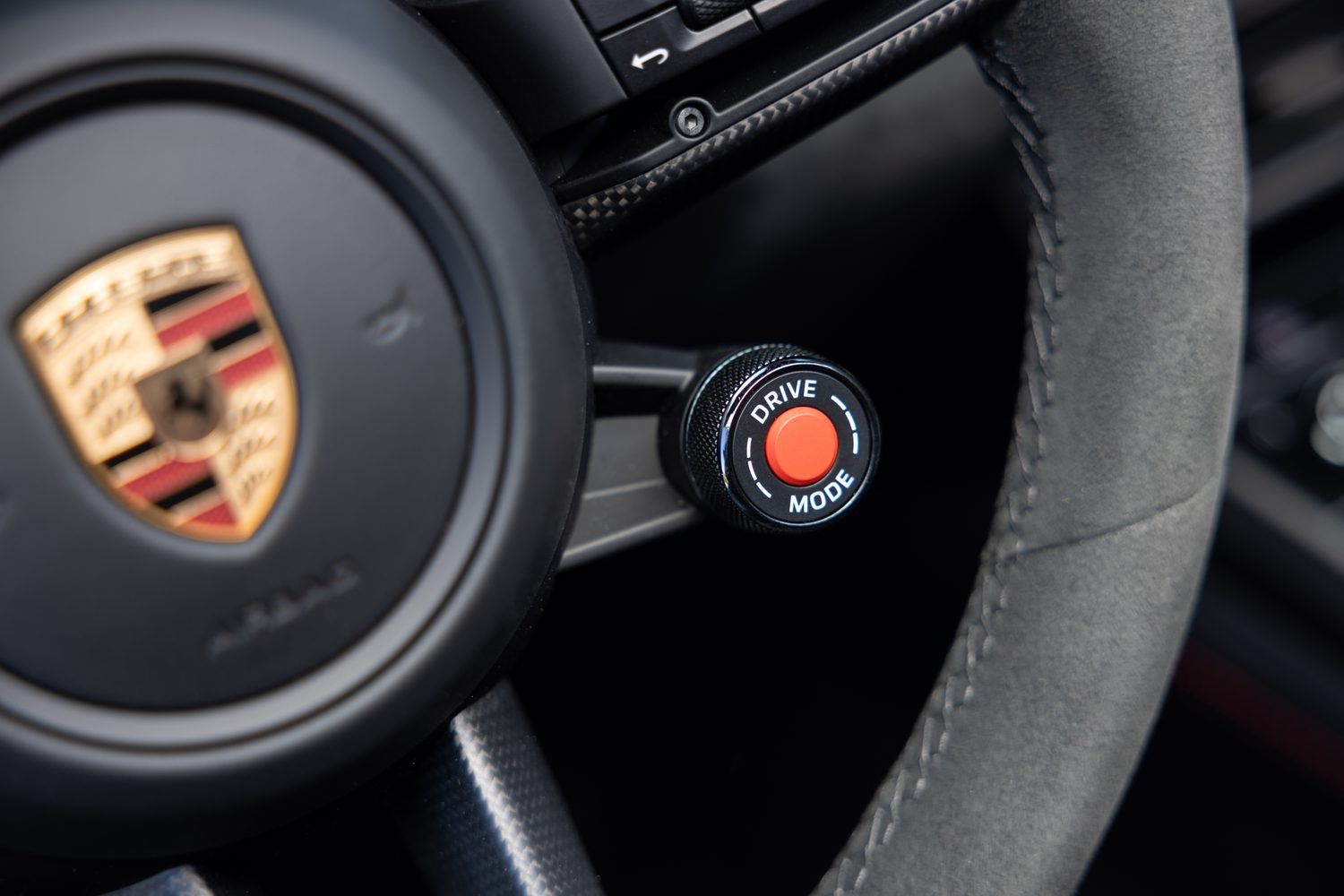
Though the new GTS may be more efficient and more hybrid than ever before, it still isn’t going to be Greenpeace’s car of the year any time soon. The Targa will still burn through unleaded at a rate of just under 11 litres every 100km, and that’s the official figure. Expect to use more than that in the real world, especially if you start enjoying the performance.
What’s the Porsche 911 Targa 4 GTS like to drive?
The Targa 4 GTS might be a GTS, but it isn’t quite the same as its Coupe and Cabriolet siblings. Like those cars, it gets some mechanical upgrades compared with the standard Carrera models, including a sportier suspension set-up and four-wheel steering, but whereas the Coupe and Cabriolet sit 10mm lower than the standard Carrera, the Targa doesn’t, and that makes quite the difference.
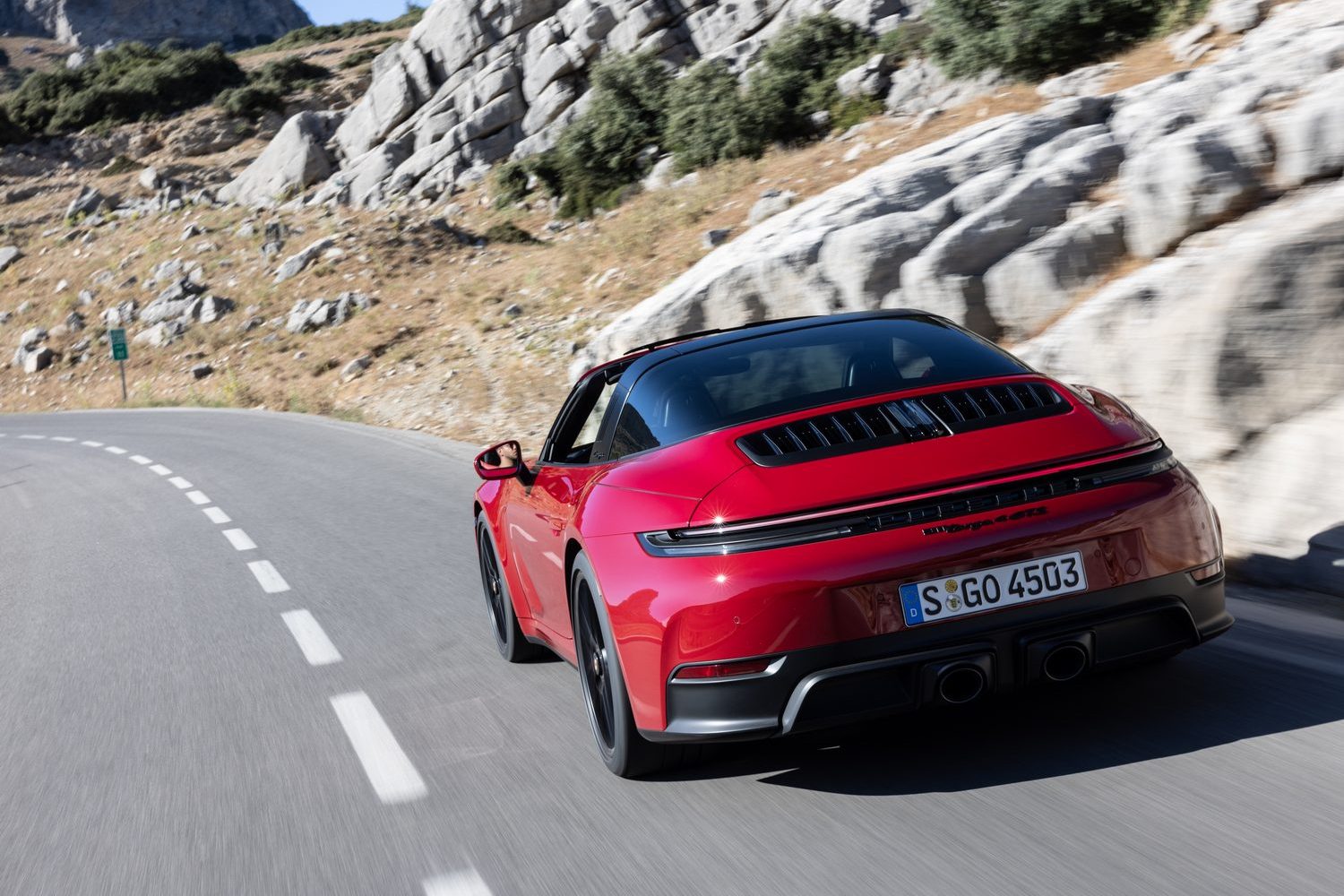
You see, though the new 911 feels a little more supple than its predecessor, the GTS models are much firmer and jigglier than the standard Carreras. Except, that is, for the Targa, which rides much more like the standard car. It isn’t a magic carpet in the same way something like a BMW i7 is - it doesn’t even ride as well as a 718 Boxster - but it manages to absorb the bumps while still acknowledging their existence, so there’s a bit of feedback there too. You know what the wheels are going through, and that’s an important trait in a quick sports car.
It might be more comfortable than the Coupe, but the suspension keeps the Targa planted even in its softest setting. There’s a bit of body lean, but not very much, and the steering feels spectacularly direct and responsive. Switch the damping into the stiffer setting and the car becomes even sharper and flatter, although it never feels as ‘pointy’ as the Coupe and the stiffer setting naturally reduces comfort. With a bit more jiggle to the ride, this setting is only useful if you’re driving as quickly as you would on a racetrack. Otherwise, it’s not worth the trade-off.
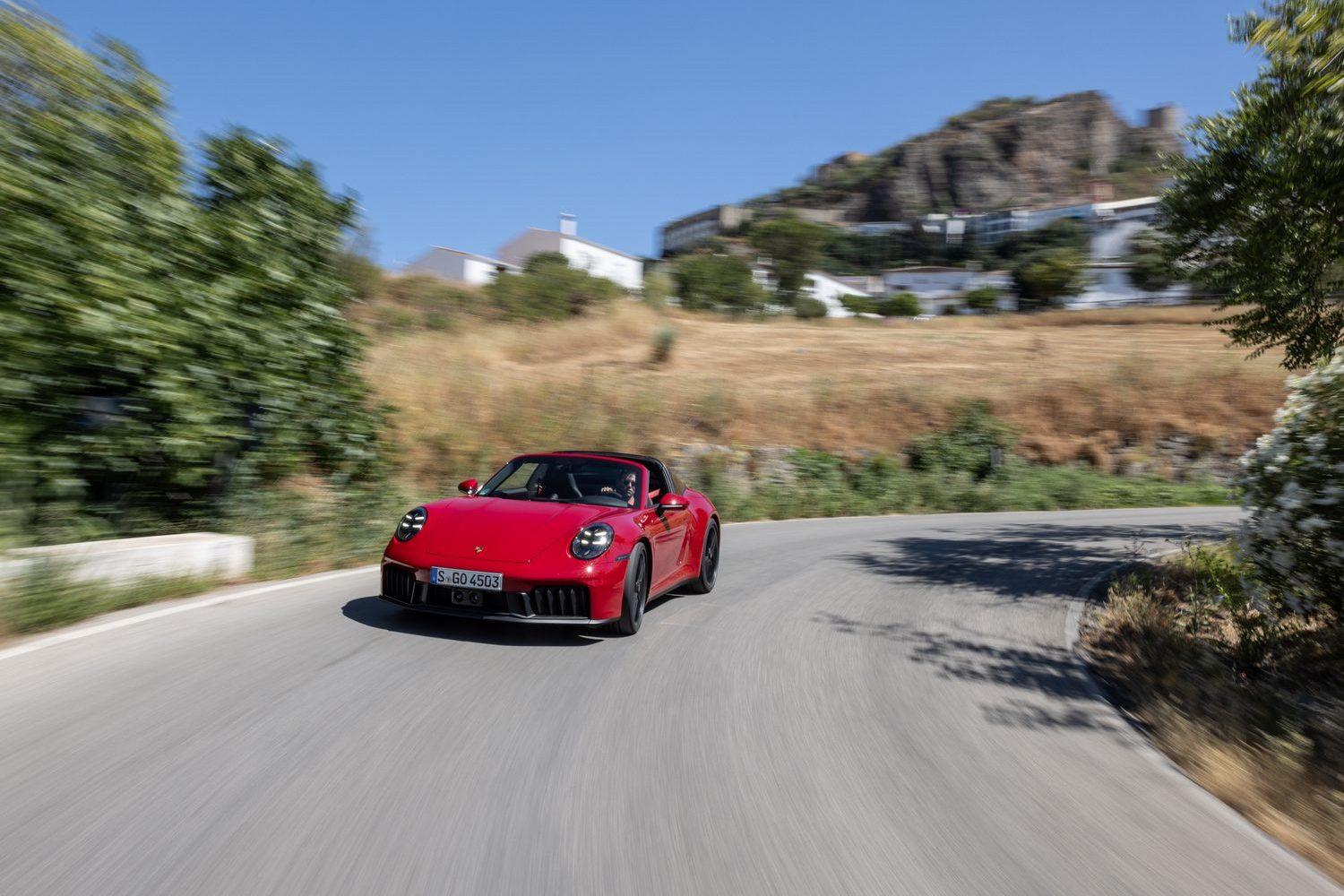
Leave it in its Normal mode, then, and the Targa will be sensational. Yes, it feels heavier than the Coupe - because it is - and the extra height means it isn’t quite as sharp, but it’s still more agile than a common-or-garden Carrera, and the performance of the T-Hybrid system makes it feel like a proper grand tourer. As does the sound, which is refined when you want it to be, and aggressive when the mood takes you - a characteristic that the sports exhaust system’s snarliest setting magnifies.
How much will the Porsche 911 Targa 4 GTS cost in Ireland?
The Targa 4 GTS comes in at a hefty €293,099 on the Irish market, which makes it noticeably more expensive than the equivalent Coupe. But at this kind of price point, we suspect customers won’t really focus too much on the cost. It’s all about having the best version of the 911 for your needs, and for those after a fast grand tourer with the option of a lowered roof, that’ll be the Targa 4 GTS.
The reasons you’d buy a Porsche 911 Targa 4 GTS
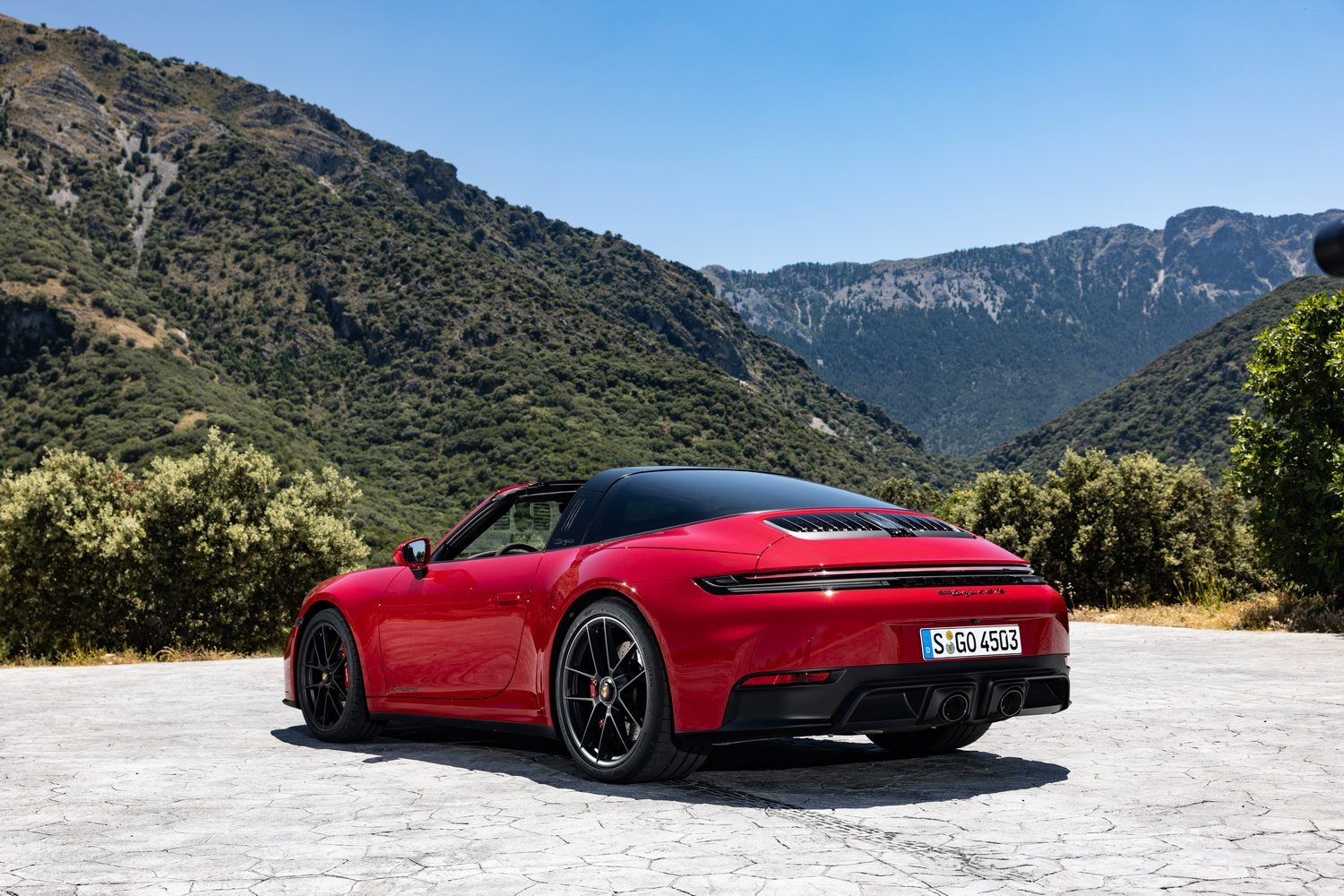
With softer suspension than the Coupe and Cabriolet versions of the 911 GTS but just as much power and almost as much excitement, the Targa makes a sweet spot in the open-top 911 range. Yes, the cabin is a bit blustery with the roof down and yes, a Coupe or Cabriolet will be more fun on a track, but for road use, the Targa is the GTS of choice. It’s fabulous.
Ask us anything about the Porsche 911 Targa 4 GTS
If you want to know more about the Porsche 911 Targa 4 GTS, or indeed any other car on sale in Ireland, you can contact our team of experts completely free of charge. Just head to our Ask Us Anything page, and you can get access to the hive mind of our automotive experts quickly and without paying a cent.

